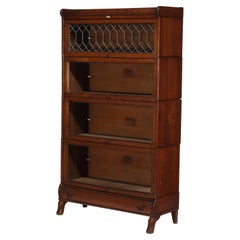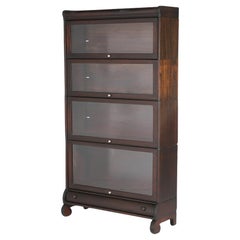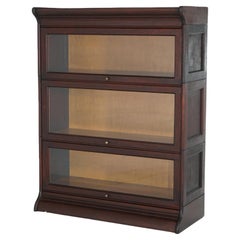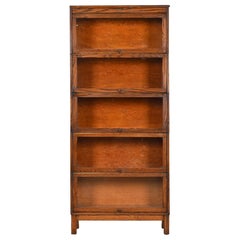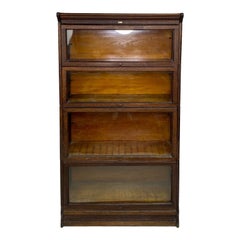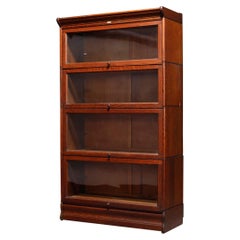Lundstrom Barrister Bookcase
20th Century Arts and Crafts Bookcases
Oak
Early 20th Century Arts and Crafts Bookcases
Glass, Mahogany
Early 20th Century Arts and Crafts Bookcases
Oak, Glass
Early 20th Century American Arts and Crafts Bookcases
Brass
Recent Sales
Vintage 1910s Arts and Crafts Bookcases
Wood
Early 20th Century American Arts and Crafts Bookcases
Metal
Early 20th Century American Arts and Crafts Bookcases
Oak, Glass
Vintage 1920s American Arts and Crafts Bookcases
Glass, Oak
Early 20th Century American Arts and Crafts Bookcases
Glass, Walnut
Early 20th Century American Arts and Crafts Bookcases
Oak, Glass
Early 20th Century Arts and Crafts Bookcases
Oak
Early 20th Century American Arts and Crafts Bookcases
Glass, Oak
Early 20th Century Arts and Crafts Bookcases
Glass, Oak
Vintage 1920s American Arts and Crafts Bookcases
Glass, Mahogany
Early 20th Century Bookcases
Wood
People Also Browsed
Vintage 1950s American Arts and Crafts Dining Room Tables
Oak
Antique Early 1900s American Mission Bookcases
Metal, Lead
Antique Early 1900s Arts and Crafts Cabinets
Oak
Early 20th Century Art Deco Bookcases
Mahogany, Glass
Early 20th Century American Arts and Crafts Cabinets
Metal, Brass
Early 20th Century European Arts and Crafts Bookcases
Glass, Oak
Antique Early 1900s American Arts and Crafts Bookcases
Glass, Oak
Early 20th Century Arts and Crafts Bookcases
Glass, Oak
Early 20th Century American Arts and Crafts Bookcases
Glass, Mahogany
Early 20th Century Mission Bookcases
Oak
20th Century Arts and Crafts Bookcases
Oak
Antique Early 1900s American Arts and Crafts Dining Room Tables
Oak
Late 20th Century American Arts and Crafts Bookcases
Brass
Early 20th Century Arts and Crafts Bookcases
Glass, Oak
Early 20th Century American Arts and Crafts Bookcases
Mahogany, Glass
Antique 1890s English Arts and Crafts Bookcases
Oak
A Close Look at Arts-and-crafts Furniture
Emerging in reaction to industrialization and mass production, the Arts and Crafts movement celebrated handcrafted design as a part of daily life. The history of Arts and Crafts furniture has roots in 1860s England with an emphasis on natural motifs and simple flourishes like mosaics and carvings. This work is characterized by plain construction that showcases the hand of the artisan.
The earliest American Arts and Crafts furniture dates back to the start of the 20th century. Designers working in this style in the United States initially looked to ideas put forth by The Craftsman, a magazine published by Wisconsin native Gustav Stickley, a furniture maker and founder of the Craftsman style. Stickley’s furniture was practical and largely free of ornament. His Craftsman style drew on French Art Nouveau as well as the work he encountered on his travels in England. There, the leading designers of the Arts and Crafts movement included William Morris, who revived historical techniques such as embroidery and printed fabrics in his furnishings, and Charles Voysey, whose minimal approach was in contrast to the ornamentation favored in the Victorian era.
American Arts and Crafts work would come to involve a range of influences unified by an elevation of traditional craftsmanship. The furniture was often built from sturdy woods like oak and mahogany while featuring details such as inlaid metal, tooled leather and ceramic tiles. The style in the United States was led by Stickley, whose clean-lined chairs and benches showcased the grain of the wood, and furniture maker Charles Rohlfs, who was informed by international influences like East Asian and French Art Nouveau design.
Hubs in America included several utopian communities such as Rose Valley in Pennsylvania and the Byrdcliffe Arts and Crafts Colony in New York, where craftspeople made furniture that prioritized function over any decoration. Their work would influence designers and architects including Frank Lloyd Wright, who built some of the most elegant and iconic structures in the United States and likewise embraced a thoughtful use of materials in his furniture.
Find antique Arts and Crafts chairs, tables, cabinets and other authentic period furniture on 1stDibs.
Finding the Right Bookcases for You
Whether you proudly shelve your books in regal mahogany or behind glass cabinet doors, an antique bookcase — or perhaps more than one — is essential to creating a cozy nook for any book lover.
As long as curious people have collected stories, we have needed a place to stow them away and preserve them. When auction houses and book dealers proliferated by the late 17th century, the bibliophile was born. And, of course, as with any treasured decorative objects or collectibles, a book lover’s volumes were suddenly worthy of a luxurious display — enter the bookcase.
Americans of means during the 19th century took to amassing art as well as rare books, and bookcases of the era — rife with hand-carved decorative accents and architectural motifs — were ideal for displaying their handsome leather-bound wares.
Although our favorite titles may change over the years, the functionality and beauty of their home within our home is timeless. Even those who don’t covet the perfect home library can benefit from an attractive display case, as bookcases can easily double as charming étagères.
Contemporary and customizable options make it easier for you to find the perfect bookcase for your style and stacks. If you don’t wish to fill your storage piece so that your collection is snug within its confines, incorporate extra space to allow for additional displays and decorative objects. And by introducing a striking dark wood Art Deco bookcase or low-profile mid-century modern design by Paul McCobb into your living room, your signed first editions won’t be the only items making a statement.
Find barrister bookcases, Globe Wernicke bookcases, bookcases with doors and other vintage and antique bookcases on 1stDibs now.
- What is a barrister bookcase?1 Answer1stDibs ExpertFebruary 22, 2021Barrister bookcases are made up of several distinct book shelf units which combine together to form the cabinet. This can be beneficial when moving, as the books can remain within the shelves and each shelf can move separately.
- 1stDibs ExpertMarch 22, 2022The term barrister bookcase means a piece of storage furniture primarily used during the 17th and 18th centuries. Also called lawyer's bookcases, the furnishings featured wood construction and glass-paneled doors. At the time the bookcases were most popular, books were expensive luxury goods. The glass doors helped to protect them from light and dust. Shop a collection of barrister bookcases on 1stDibs.
- 1stDibs ExpertMay 5, 2023A few companies made barrister bookcases, including the F. E. Hale Manufacturing Company, Globe Wernicke, Grand Rapids Furniture Company, Gunn Furniture Company and the John Danner Company. Barrister bookcases are bookcases with solid backs and removable shelving units that get stacked inside. Doors that open outward and slide away under the shelf enclose each unit. On 1stDibs, shop a range of barrister bookcases.
